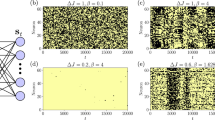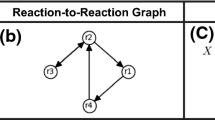Summary
Interest in simulation of large-scale metabolic networks, species development, and genesis of various diseases requires new simulation techniques to accommodate the high complexity of realistic biological networks. Information geometry and topological formalisms are proposed to analyze information processes. We analyze the complexity of large-scale biological networks as well as transition of the system functionality due to modification in the system architecture, system environment, and system components.
The dynamic core model is developed. The term dynamic core is used to define a set of causally related network functions. Delocalization of dynamic core model provides a mathematical formalism to analyze migration of specific functions in biosystems which undergo structure transition induced by the environment. The term delocalization is used to describe these processes of migration. We constructed a holographic model with self-poetic dynamic cores which preserves functional properties under those transitions. Topological constraints such as Ricci flow and Pfaff dimension were found for statistical manifolds which represent biological networks. These constraints can provide insight on processes of degeneration and recovery which take place in large-scale networks. We would like to suggest that therapies which are able to effectively implement estimated constraints, will successfully adjust biological systems and recover altered functionality. Also, we mathematically formulate the hypothesis that there is a direct consistency between biological and chemical evolution. Any set of causal relations within a biological network has its dual reimplementation in the chemistry of the system environment.
Access this chapter
Tax calculation will be finalised at checkout
Purchases are for personal use only
Similar content being viewed by others
References
Bernhard O. Palsson, System Biology. Cambridge University Press, Cambridge
Andrei L. Osterman, Tadhg P. Begley, A Subsystems-Based Approach to the Identification of Drug Targets in Bacterial Pathogens. Progress in Drug Research, Vol. 64
Anti De Sitter Space and Holography. Edward Witten (http://arxiv.org/abs/hep-th/9802150)
http://en.wikipedia.org/wiki/Information_geometry, http://en.wikipedia.org/wiki/Curvature_tensor
Grisha Perelman (November 11, 2002) “The Entropy Formula for the Ricci Flow and its Geometric Applications”. ar**v:math.DG/0211159
Pedro Lauridsen, Ribeiro Renormalization Group Flow in Algebraic Holography http://www.arxiv.org/abs/hep-th/0306024
Sebastian de Haro, Kostas Skenderis, Sergey N. Solodukhin, Holographic Reconstruction of Spacetime and Renormalization in the AdS/CFT Correspondence http://www.arxiv.org/abs/hep-th/0002230
Sergey N. Solodukhin, Entanglement entropy and the Ricci flow http://www.arxiv.org/abs/hep-th/0609045
Robert M. Kiehn, (1990) “Topological Torsion, Pfaff Dimension and Coherent Structures”, in: H. K. Moffatt and T. S. Tsinober eds., Topological Fluid Mechanics. Cambridge University Press, Cambridge, 449–458 http://www22.pair.com/csdc/pd2/pd2fre1.htm
Gerald Edelman (2006) Theories and Measures of Consciousness: An Extended Framework. 10.1073/pnas.0604347103
Giulio Tononi, Olaf Sporns (2003) Measuring Information Integration., BMC Neuroscience, 4:31
Ilya Prigogine, Dilip Kondepudi (1998) Modern Thermodynamics: From Heat Engines to Dissipative Structures. Wiley, Chichester
Author information
Authors and Affiliations
Editor information
Editors and Affiliations
Rights and permissions
Copyright information
© 2009 Humana Press, a part of Springer Science+Business Media, LLC
About this protocol
Cite this protocol
Astakhov, V. (2009). Methods of Information Geometry in Computational System Biology (Consistency between Chemical and Biological Evolution). In: Astakhov, V. (eds) Biomedical Informatics. Methods in Molecular Biology™, vol 569. Humana Press, Totowa, NJ. https://doi.org/10.1007/978-1-59745-524-4_6
Download citation
DOI: https://doi.org/10.1007/978-1-59745-524-4_6
Published:
Publisher Name: Humana Press, Totowa, NJ
Print ISBN: 978-1-934115-63-3
Online ISBN: 978-1-59745-524-4
eBook Packages: Springer Protocols




